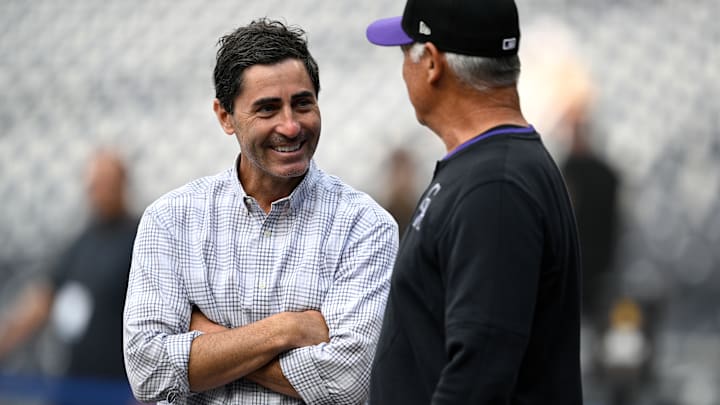If you’re dreaming on a splashy, banner-day press conference at Petco this winter, here’s the cold shower: the Padres would be buying more than star power. They’d also be buying a tax bill and draft penalties that stick to the roster sheet like pine tar. The Competitive Balance Tax isn’t a rumor or a vibe, it’s a calculator. And once you’re in repeater territory, every extra dollar costs the club more than a dollar, plus a little future talent on layaway. San Diego’s margin for error narrows fast when you mix a big-ticket contract with repeater status and qualifying-offer rules.
The basic math is brutal. The CBT resets if you dip under for a year, but if you don’t, the rate escalates: first year over is 20%, second straight is 30%, and the third consecutive year or more jumps to 50% on every dollar over the line. That line climbs to $241 million in 2025 and $244 million in 2026, and there are additional surcharges if you blow past the base threshold by $20M or more. In other words: pay once, pay more later, and pay the most if you never step back under.
The luxury-tax equation that could reshape Padres’ 2026 free-agent plans
Here’s how that hits the Padres’ specific situation. San Diego reset under the CBT in 2024. They climbed back over in 2025 and appear to be prepared to stay there in 2026. Say, a top-tier free agent pushes them past the line, then 2026 becomes a repeat-offender year: a 30% tax on every dollar over the threshold (before any surcharges). That’s real money tacked onto the AAV, and it compounds the deeper you go beyond the line, turning a “$30M” player into something much closer to a “$39–$42M” decision once the meter starts running.
But the tax bill is only half the tab. If that top-tier free agent turned down a qualifying offer from his former club, the penalties get spikier for a CBT payor. The signing team (i.e., a tax-paying Padres club) would forfeit its second- and fifth-highest picks in the next amateur draft and lose $1 million from the following international bonus pool. That’s a meaningful talent drain for a franchise that has to keep refreshing its pipeline.
Conversely, when you lose a qualified free agent while over the tax, your compensation pick doesn’t show up until after the fourth round, see the Braves’ blueprint: Atlanta paid tax in 2024 and ended up with the 136th pick in the 2025 draft after Max Fried rejected their QO and signed with the Yankees. That’s a long wait before you get to recoup anything.
Context matters this winter, too. A surprising number of likely QO candidates sit on tax-paying clubs, which means the market will be littered with players who carry draft-compensation strings. Think along the lines of big-name bats or arms from teams like the Phillies, Blue Jays, Mets, Yankees, and even the Padres themselves have pitchers (Dylan Cease and Michael King) who’d be logical QO names if they hit the market. The punchline for San Diego: in a QO-heavy market, the odds of your “perfect fit” coming attached to penalties goes up, not down. That’s the kind of invisible cost that shapes front-office boards in the winter.
The CBA that governs all of this runs through 2026. Could the next agreement tweak the QO or the CBT structure? Possibly. But you plan with the rules in front of you, not the ones you hope for later. Today’s rules make it pretty simple: if the Padres chase a headline free agent for 2026 while remaining a CBT payor, they’re paying a 30% repeater tax on the overage, risking surcharge tiers, sacrificing two draft picks, and shaving a million off their international pool, all while knowing that any outgoing QO comp pick would be shunted to after the fourth round.
